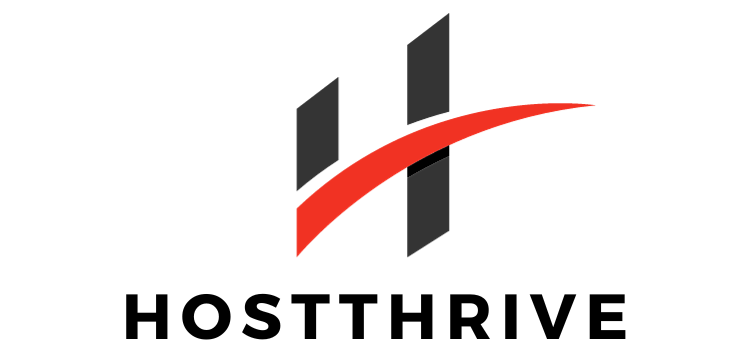How to Identify if Your Website Has Been Hacked
In today’s digital age, the security of your website is more important than ever. With cyber attacks on the rise, it’s crucial to be able to detect if your website has been hacked. In this article, we will discuss the most common signs of a hacked website so you can take action and protect your online presence.
### Unusual Website Behavior
If you notice any unusual behavior on your website, such as strange pop-ups, unexplained redirects, or unauthorized changes to your content, these could be signs that your website has been hacked. It’s important to investigate these issues immediately to prevent further damage.
### Suspicious User Accounts
Another sign of a hacked website is the presence of suspicious user accounts. If you see unfamiliar user profiles with administrative privileges or notice strange activity from existing user accounts, this could indicate a security breach. Be sure to review and remove any unauthorized user accounts promptly.
### Malware Warnings
If your website is flagged with malware warnings by search engines or antivirus programs, this is a clear indication that your website has been compromised. Malicious software can infect your website and pose a significant risk to your visitors. It’s essential to address these warnings promptly to prevent any potential harm.
### Strange Website Performance
A hacked website may experience unusual performance issues, such as slow loading times, crashes, or error messages. These issues can be a result of malicious code injected into your website by hackers. Monitoring your website’s performance regularly can help you identify any suspicious activity and address it promptly.
### Changes in Search Engine Rankings
If you notice a sudden drop in your website’s search engine rankings or discover that your website has been removed from search results altogether, it could be a sign of a hacked website. Hackers may manipulate your website’s content or insert spam links, leading search engines to penalize your website. Monitoring your search engine rankings can help you detect any unauthorized changes.
### Defacement of Website Content
One of the most obvious signs of a hacked website is the defacement of website content. Hackers may replace your website’s content with their own messages, images, or links. If you notice any unauthorized changes to your website’s content, it’s crucial to investigate and restore your original content immediately.
### Unexplained Traffic Spikes
If you suddenly experience a significant increase in website traffic without any apparent reason, it could be a sign of a hacked website. Hackers may use your website to drive traffic to malicious websites or engage in illegal activities, resulting in unexplained traffic spikes. Monitoring your website traffic can help you identify any irregularities and take appropriate action.
### Suspicious Backlinks
Hackers may create unauthorized backlinks on your website to boost their own websites’ search engine rankings. If you notice suspicious backlinks pointing to unrelated or spammy websites, it’s crucial to remove these backlinks promptly. Regularly monitoring your website’s backlink profile can help you detect any unauthorized links.
### Unauthorized Access to Admin Pages
If you discover unauthorized access to your website’s admin pages or backend files, it’s a clear indication that your website has been hacked. Hackers may exploit vulnerabilities in your website’s security to gain access to sensitive information or make unauthorized changes. Implementing strong authentication measures can help prevent unauthorized access to your admin pages.
### Phishing Attempts
A hacked website may be used by hackers to launch phishing attacks on unsuspecting visitors. If you receive reports of phishing attempts from your website users or notice suspicious emails originating from your website, it’s crucial to investigate and address these threats immediately. Educating your users about phishing techniques can help prevent them from falling victim to these attacks.
### Strange Files or Directories
If you come across unfamiliar files or directories on your website’s server that you did not create, it could be a sign of a hacked website. Hackers may upload malicious files or scripts to your server to exploit vulnerabilities and gain unauthorized access. Regularly scanning your website’s server for suspicious files can help you identify any unauthorized content.
### Suspicious E-commerce Transactions
If you run an e-commerce website, suspicious transactions or unauthorized purchases could indicate that your website has been hacked. Hackers may use your website to steal sensitive customer information or conduct fraudulent transactions. Monitoring your website’s transaction history and implementing security measures can help prevent financial losses and protect your customers’ data.
### Google Search Console Notifications
Google Search Console can provide valuable insights into your website’s security status by sending you notifications about potential security issues. If you receive alerts about malware infections, suspicious content, or other security threats, it’s essential to investigate these issues promptly. Addressing any security issues flagged by Google Search Console can help protect your website and maintain your search engine rankings.
### Blacklisting by Search Engines
If your website is blacklisted by search engines for hosting malicious content or engaging in suspicious activities, it could be a sign of a hacked website. Being blacklisted can severely impact your website’s visibility and credibility, leading to a significant loss of traffic and revenue. Regularly monitoring your website’s reputation and addressing any blacklistings promptly can help protect your online reputation.
### Redirects to Malicious Websites
Hackers may use your website to redirect visitors to malicious websites or phishing pages without your knowledge. If you notice unauthorized redirects on your website, it’s crucial to investigate and remove these redirects immediately. Redirecting visitors to malicious websites can harm your website’s reputation and put your visitors at risk of cyber attacks.
### Unauthorized Email Activity
If hackers gain access to your website’s email accounts, they may use them to send spam or phishing emails to your subscribers or contacts. If you receive reports of unauthorized email activity from your website domain or notice a sudden increase in spam emails, it’s essential to secure your email accounts and investigate the source of the unauthorized activity. Taking swift action can help prevent further damage to your website’s reputation.
### HTTPS Security Warnings
If your website displays security warnings in web browsers, such as “Not Secure” or “Your Connection is Not Private,” it could be a sign of a hacked website. Hackers may exploit vulnerabilities in your website’s security certificate or encryption protocols, leading to HTTPS security warnings for your visitors. Ensuring that your website is SSL certified and implementing secure encryption can help protect your visitors’ data and prevent security warnings.
### Unresponsive Web Hosting Provider
If you experience unresponsiveness or lack of support from your web hosting provider when you report security incidents or suspicious activity, it could be a red flag of a hacked website. Your web hosting provider should take security incidents seriously and provide assistance in addressing security threats promptly. If you feel that your web hosting provider is not adequately addressing security concerns, it may be time to consider switching to a more reliable hosting provider.
### Security Vulnerabilities in Content Management Systems
Content Management Systems (CMS) like WordPress, Joomla, or Drupal may have security vulnerabilities that hackers can exploit to gain access to your website. If you use a CMS to manage your website, it’s essential to stay informed about security updates and patches released by the CMS provider. Regularly updating your CMS and plugins can help protect your website against known security vulnerabilities and reduce the risk of hacking.
### Lack of Secure Password Practices
Weak or reused passwords can make it easier for hackers to gain unauthorized access to your website. If you use simple passwords or share passwords across multiple accounts, it increases the risk of a security breach. Implementing strong password policies, such as using complex passwords, enabling two-factor authentication, and changing passwords regularly, can help enhance your website’s security and prevent unauthorized access.
### Insufficient Firewall Protection
Firewalls are essential security measures that help protect your website from external threats, such as DDoS attacks, malware infections, and hacking attempts. If your website lacks a firewall or uses outdated firewall technology, it may be more vulnerable to security breaches. Implementing a robust firewall solution and regularly monitoring firewall activity can help safeguard your website against cyber attacks and unauthorized access.
### Outdated Software and Plugins
Outdated software and plugins are common targets for hackers looking to exploit security vulnerabilities. If you fail to update your website’s software, plugins, or themes regularly, it increases the risk of a security breach. Regularly checking for software updates and installing security patches can help protect your website against known vulnerabilities and reduce the likelihood of a hacking incident.
### Inadequate Data Backup Practices
Regular data backups are essential for protecting your website in the event of a security breach or data loss. If you fail to back up your website’s data regularly or store backups on the same server as your website, it can make it more challenging to recover your website in case of a hacking incident. Implementing reliable data backup practices, such as storing backups offsite and testing backup restoration procedures, can help ensure that you can recover your website data quickly in case of an emergency.
### Lack of Security Monitoring
Without proper security monitoring tools in place, you may miss early signs of a security breach on your website. Monitoring tools can help detect unusual activity, suspicious behavior, or security threats and alert you to take action promptly. Implementing security monitoring solutions, such as intrusion detection systems or security information and event management (SIEM) software, can help enhance your website’s security posture and protect your online assets.
### Failure to Conduct Regular Security Audits
Regular security audits can help identify vulnerabilities, weaknesses, or potential security threats on your website. If you fail to conduct security audits regularly or overlook security best practices, it increases the risk of a security breach. Scheduling routine security audits, penetration testing, or vulnerability assessments can help you assess your website’s security posture, address any security gaps, and improve your overall security strategy.
### Lack of Employee Training
Human error is a common factor in security breaches, so it’s essential to provide security awareness training to your employees. Educating your staff about cybersecurity best practices, phishing scams, and social engineering threats can help prevent security incidents and protect your website from hacking attempts. Investing in employee training and promoting a security-conscious culture can help strengthen your website’s security defenses and reduce the risk of a security breach.
### Ransomware Attacks
Ransomware attacks involve hackers locking or encrypting your website’s data and demanding a ransom for its release. If your website falls victim to a ransomware attack, it can result in data loss, financial losses, and reputational damage. Implementing robust backup solutions, securing sensitive data, and training your employees to recognize phishing attempts can help prevent ransomware attacks and mitigate their impact on your website.
### Fraudulent Transactions and Chargebacks
If your website processes online payments or transactions, fraudulent activities like chargebacks or unauthorized purchases could indicate a hacked website. Hackers may use stolen credit card information or compromised accounts to conduct fraudulent transactions on your website. Implementing strong payment security measures, such as PCI DSS compliance, encryption, and fraud detection tools, can help protect your customers’ financial information and prevent fraudulent transactions.
Conclusion
Protecting Your Website from Hacking Attacks
With cyber threats on the rise, it’s crucial to prioritize website security and take proactive measures to protect your online assets from hacking attacks. By being vigilant and monitoring your website for signs of a security breach, you can detect and address potential threats before they escalate. Implementing robust security measures, such as firewalls, data backups, software updates, and employee training, can help safeguard your website against hacking attempts and ensure the integrity of your online presence. Remember, the security of your website is in your hands, so stay informed, stay proactive, and stay safe online.












